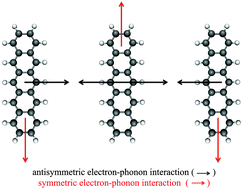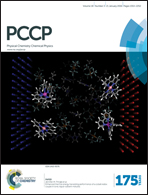Impact of the electron–phonon coupling symmetry on the polaron stability and mobility in organic molecular semiconductors
Abstract
The influence of the interplay between symmetric and antisymmetric inter-molecular electron–phonon (e–ph) coupling mechanisms on the polaron stability and mobility in organic semiconductors has been theoretically investigated at a molecular level. A semi-empirical Holstein–Peierls model is used which in addition to the symmetric and antisymmetric inter-molecular e–ph interactions also includes an antisymmetric intra-molecular e–ph coupling. Our results show that the symmetric e–ph coupling plays the role of destabilizing the polaron as a result of temperature induced phonons that, via the symmetric coupling, affects the charge distribution of the polaron. Considering this kind of coupling, the parameter space for which the polaron is dynamically stable is strongly temperature-dependent. For the combination of symmetric e–ph coupling strength and temperature, which results in a stable polaron, the velocity of the polaron, and therefore also the charge carrier mobility, is not affected by the symmetric e–ph coupling strength.


 Please wait while we load your content...
Please wait while we load your content...